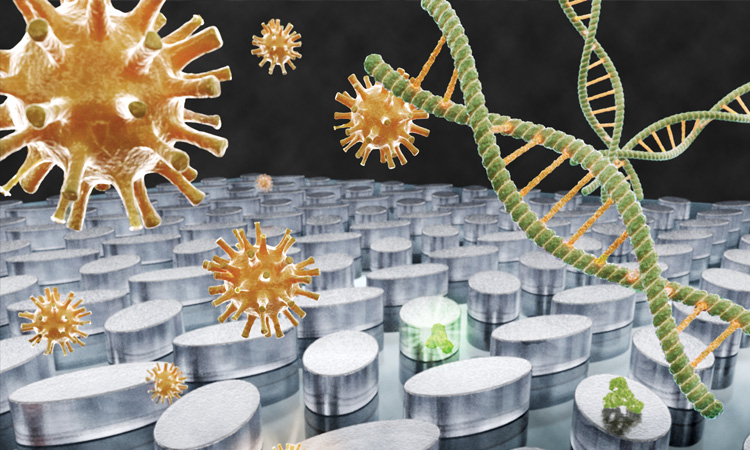Conversations
Biosensing and Bioimaging with Nanophotonics
At the Optica Sensing Congress, Hatice Altug will discuss the latest developments in nanophotonics for applications in the life sciences and biomedicine.

Nanophotonic metasurfaces interact with biomolecules and biological materials in a biosensing application. [Reprinted with permission from ACS Photonics 8, 47 (2021). © 2021, American Chemical Society]
The Optica Sensing Congress will be held from 15 to 19 July in Toulouse, France. At the congress, Hatice Altug, École Polytechnique Fédérale de Lausanne, Switzerland (EPFL), will give a plenary talk entitled, “Integrated Metasurfaces for Biosensing and Bioimaging.” She plans to cover her team’s latest research using nanophotonics and integrated metasurfaces to develop novel biosensing, spectroscopy and bioimaging systems. OPN spoke with Altug ahead of her talk to get a preview and learn more about the potential for nanophotonic technologies to improve global health care.
…Log in or become a member to view the full text of this article.
This article may be available for purchase via the search at Optica Publishing Group.
Optica Members get the full text of Optics & Photonics News, plus a variety of other member benefits.
